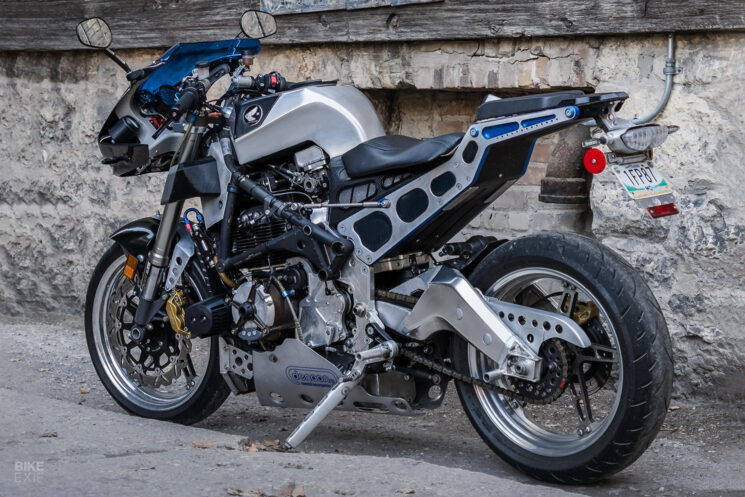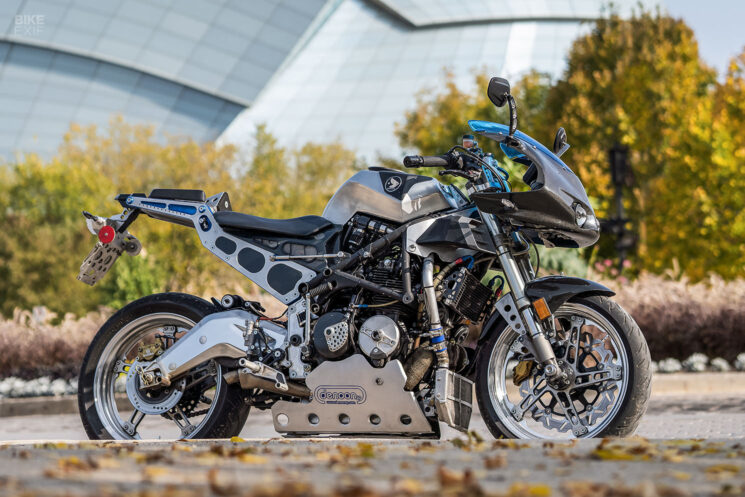
In 1993, the Swedish psychologist K. Anders Ericsson hypothesized that it takes roughly 10,000 hours of practice to truly master a skill. Over a decade later, Malcolm Gladwell’s best-selling novel ‘The Outliers’ would confirm this hypothesis, pointing out that The Beatles spent roughly the same amount of time honing their craft in strip clubs around Hamburg before anyone knew who they were back in the UK.
So what do scholarly papers, public intellectuals, and international debauchery have to do with custom motorcycles? To put it bluntly, Rick Denoon estimates that, over the last 16 years, he’s put about 10,000 hours of work into this turbocharged Honda CB400F.
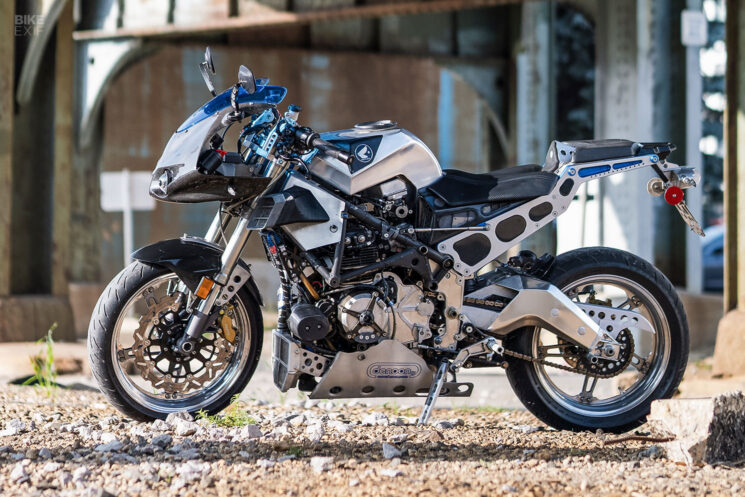
The story starts way back in 2006. Rick had just finished the most impressive build of his life—an Egli chassised Honda 400F that made the cover of the British magazine Classic Motorcycle Mechanics. Rick’s slab-sided Honda endurance racer was a thing of beauty, but he was ready to take things further with a complete ground-up build like no other.
The planning process for the bike you see here began—but it would be a long time before Rick turned the first wrench.
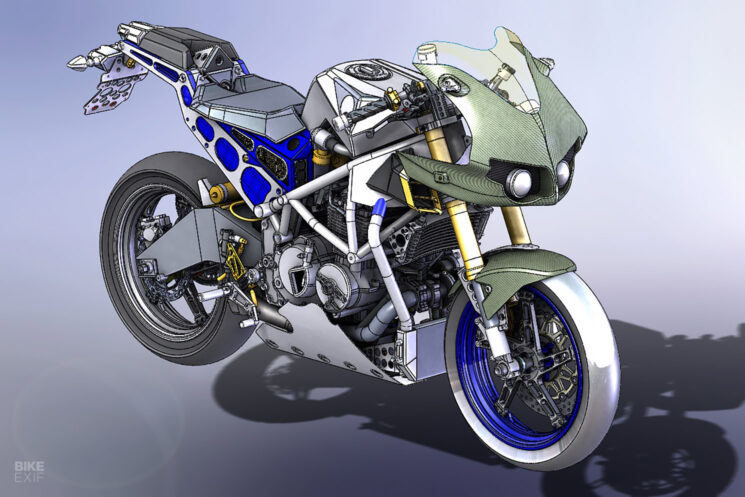
As a 3D CAD designer by trade, Rick was uniquely qualified to obsess over every detail of the bike in digital form. Before anything had been physically built, he had run an in-depth analysis of all the Honda’s major components—from the frame, wheels, and front end right down to the clip-ons he planned to use.
As it currently sits, this CB is built to what Rick refers to as ‘Version 28’ of the design. Yes—Rick went back to the drawing board nearly 30 times since starting in 2007. And while some of those versions never made it beyond his computer screen, several were fully built, torn down, and started over along the way.
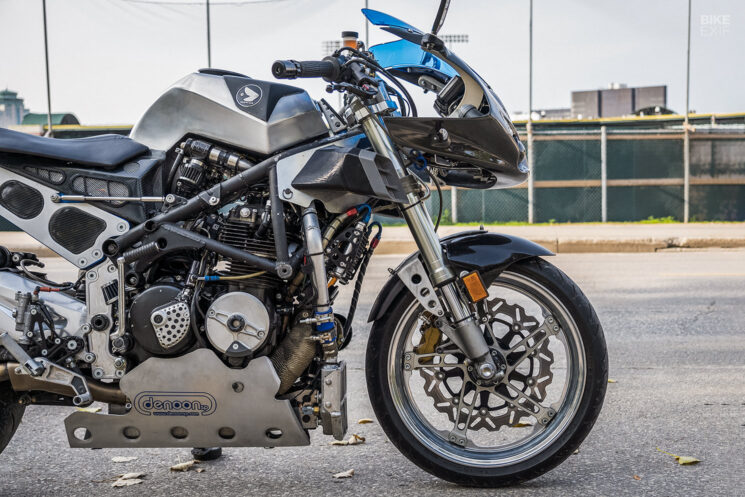
Hours were poured into conceptual design, but eventually, Denoon had to begin his masterwork in earnest. “It’s kind of embarrassing to admit, but it took nearly 13 years to finally have a running bike on the road,” he tells us. “It’s easy to get caught up in changes, and at some point, you have to just stop and build it!”
A hand-built frame was made using a combination of steel tubing and T6 aluminum plates, and a new subframe, machined from T6 aluminum, was bolted onto that. Rick had designed the bike around a set of Honda CBR954RR forks, with the rake set to 24.5 degrees.
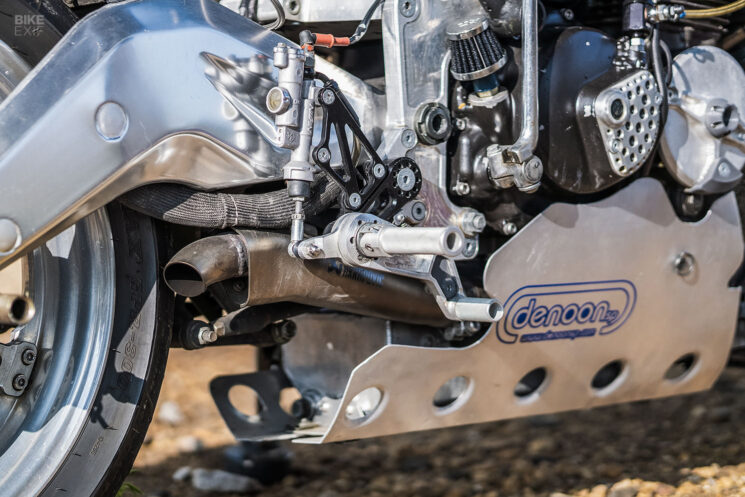
For the swingarm, Rick sourced the polished angular beauty you see here from an Aprilia Mille. Then he narrowed it down by hand to accommodate a set of bespoke spun aluminum wheels, laced to CNC machined hubs via CNC machined spokes. His plan from the start was to utilize a Honda CBR600RR shock—but, as is the case with the rest of the bike, Rick went much further than simply machining some spacers and bolting the thing on.
“The rear suspension was designed using Tony Foale’s suspension software to mimic the force curve of a CBR600RR,” he explains. “That ensured that using the CBR shock would yield appropriate suspension forces. The Foale software will give you the vectors and the amount of force being transferred from the rear wheel through the swingarm, into the links, and eventually into the frame mounting points.”

With the major chassis parts sorted, Rick moved on to the brakes and controls. Triple clamps, foot controls, and clip-on handlebars were CNC-machined from scratch. The single front rotor and caliper were carried over from the CBR954RR, while a Brembo caliper was fitted to a rear disk taken from a CBR600F.
Rick knows his way around a CB400F engine. He’s built numerous 400F customs both for himself and on commission. And up until this build, he’s always gone by what is generally considered the formula for squeezing performance out of the little four-cylinder.
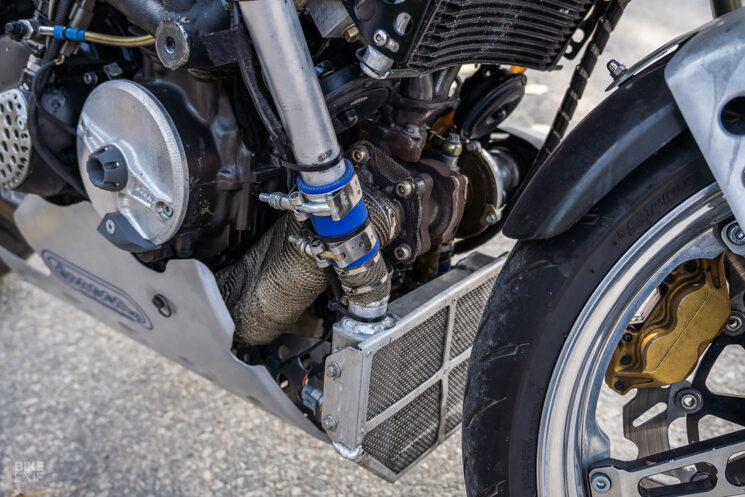
“The proven method is to bore it to 458 cc, add a cam, bore the carbs to 24 mm, and spin the hell out of it,” he says. “400Fs are pretty gutless below 8,000 rpm, then there’s a bit of a hit, and the power comes on until 10, 11, or 12,000 rpm, depending on your build specs.”
Rick says that this was originally the plan here, but about halfway through the process, he stumbled across some inexpensive Chinese copies of an IDI turbo. With nothing but time on his hands, Rick began to wonder: could this be the final piece that was missing?

Of course, adding a turbo meant that Rick would have to add fuel injection. And that meant adding a MicroSquirt ECU, a custom-fitted Bell intercooler, and a pair of CBR600RR throttle bodies and injectors to handle it all. Unfortunately, even with all the right parts in hand, Rick realized that the 400F engine wouldn’t make nearly enough amperage to run the new EFI system—so he cooked up a custom fix which he also pulled from a CBR600RR.
Fitting the new generator from the baby ‘Blade was no easy task. Rick had to machine a compound-angled sleeve from scratch to mate the large-diameter CBR rotor to the much smaller 400F crank. Once he succeeded in fitting the new system, a new housing was required to seal the whole assembly—hence the custom CNC machined cover you see on the current bike.
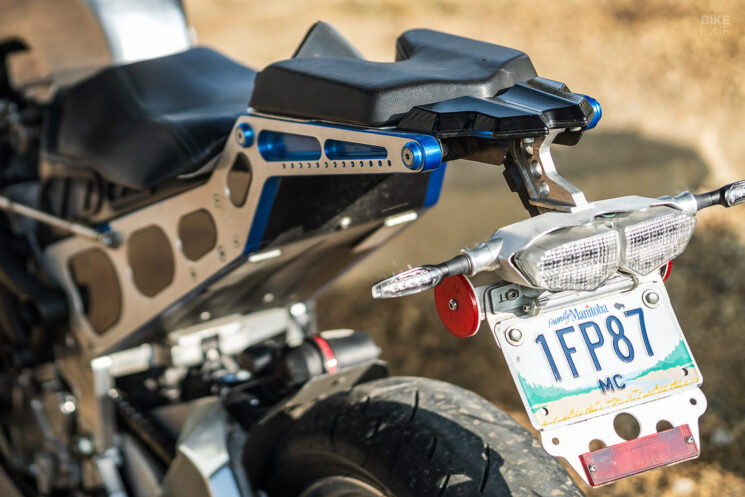
Power at the crankshaft has nearly doubled, jumping from 37 hp to an impressive 65 hp at 10 lbs of boost, and torque figures are up by about 27 Nm. Interestingly enough, Rick says when the bike is ridden without boost, it still runs just like a stock 400F and averages over 65 miles to the (imperial) gallon.
“The bike rides, stops, and handles like a modern bike due to the suspension, brakes, and geometry, and is reasonably comfortable to ride,” he tells us. “And it does get ridden. I’ve done over 28,000 km [about 17,400 miles] in the last four years.”
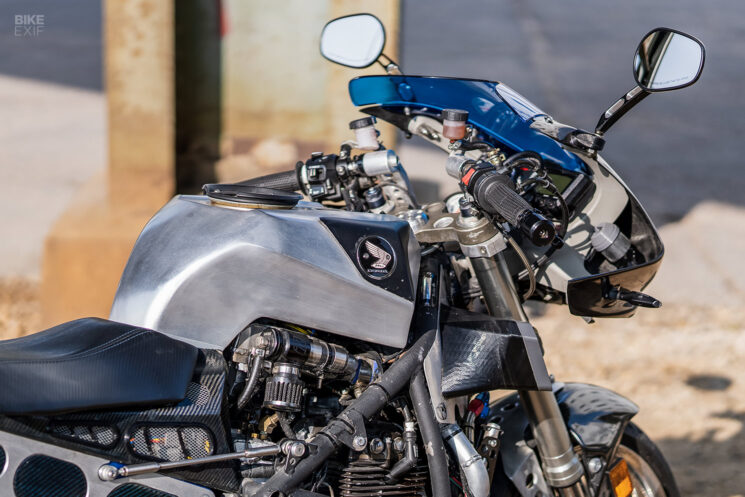
With the major moving parts sorted out and years of trial and error behind him, Rick was finally free to finalize his masterpiece. That carbon fairing you see on the front? It’s exactly what you think it is; pulled from a Buell Firebolt, magnesium fairing stay and all.
The matching carbon front fender was borrowed from an “unknown Yamaha,” and then made to fit using hand-formed and CNC-machined aluminum mounts. The tank is also entirely hand-formed, as is the belly pan, intercooler bracket, and chain guard.
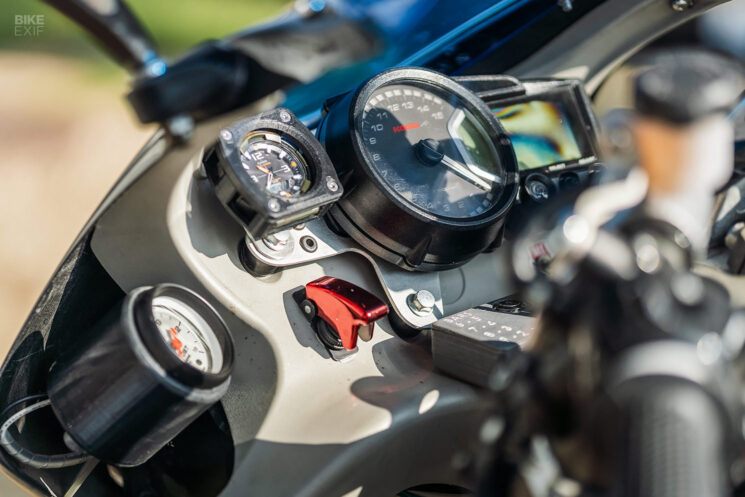
The cluster of gauges is a combination of a Koso RX-2 and an Accell boost gauge. added on to monitor the turbo. The seats are hand-built from scratch, and all the electronics are held together by a custom wiring harness running off a Shorai Lithium-ion battery.
Rick’s turbocharged Honda CB400F is every bit deserving of the title of masterpiece—if for no reason than the fact that it’s brought a beloved old Honda powerplant from the 1970s into the modern era. A forced induction sportbike with a kickstart is a breath of fresh air we didn’t even know we needed.
Well done, Rick.
Denoon SP | Images by Derek Molinski
